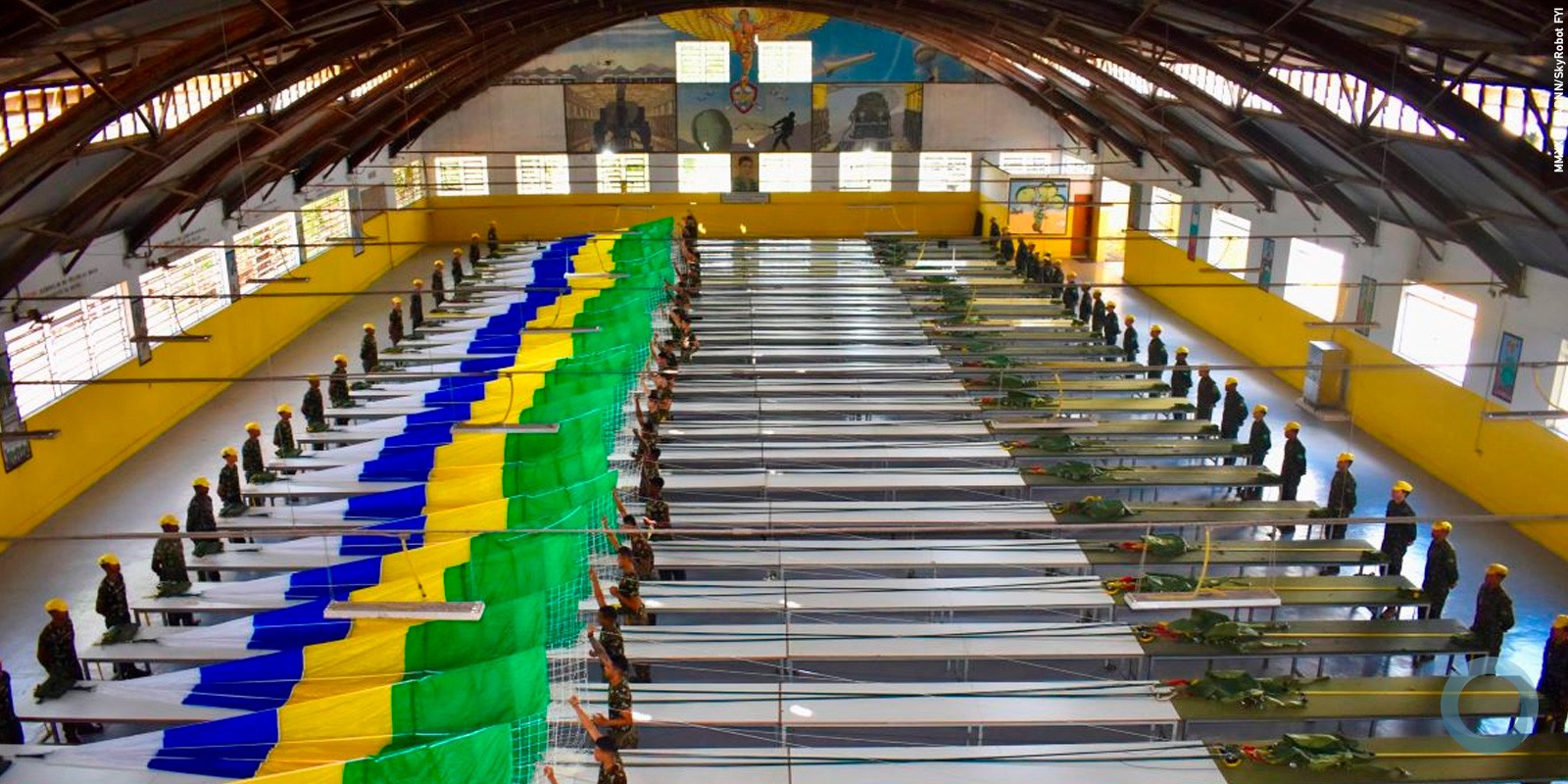Adriana Weaver
Brazil's Armed Forces, Federal Police, and other government agencies are working together to protect the country's valuable natural resources under the Action Plan for the Prevention and Control of Deforestation in the Legal Amazon Region (PPCDAm, for its Portuguese acronym).
Under the Action Plan, the collaborative approach is responsible for repressing criminal activities, such as illegal logging, in the Brazilian Amazon.
To help preserve the region's natural resources, authorities have launched two new projects: Amazônia SAR (which refers to the English acronym for Synthetic Aperture Radar), which helps the Armed Forces monitor activities in the Legal Amazon Region, and Amazônia Conectada (Connected Amazon), which brings Internet access to the Amazon.
The technological advancements provided by these initiatives will help the Armed Forces and other authorities monitor environmental problems like deforestation, which has decreased 82% over the past decade according to the National Institute for Space Research (INPE). Meanwhile, the Deforestation Monitoring Project in the Legal Amazon Region (PRODES), which maps images from Earth observation satellite Landsat 8, revealed the annual rate of deforestation in the region fell from 27,772 square kilometers to 5,012 square kilometers between 2004-2014.
“These [scientific and technological] instruments conduct detailed monitoring of the region, collecting information in a more agile manner and distributing this information to the supervisory agencies,” said Minister of Science, Technology, and Innovation Aldo Rebelo said when the figures were released on August 14.
A joint effort
To promote the sustainable development of Brazil's environment, authorities in the 1950s created the Legal Amazon Region, which encompasses nine Brazilian states: Acre, Amapá, Amazonas, Maranhão, Mato Grosso, Pará, Rondônia, Roraima, and Tocantins. The fight against deforestation of the Amazon forest in this region, which comprises about 60% of Brazil's territory, is a joint effort between the Armed Forces, the Federal Police, and the Brazilian Institute of Environment and Renewable Natural Resources (IBAMA), a federal agency under the Ministry of Environment with the authority to enforce environmental law.
That effort is aided by the Amazônia SAR project's orbital radar, which monitors the 950,000 square kilometers of the Legal Amazon Region; it allows security forces to deploy to areas where environmental threats, such as illegal logging operations, are occurring. Optical imaging radars monitor just 280,000 square kilometers every 15 days when there are no clouds in the sky, but the new system can operate in adverse weather; with a total cost of R$80.5 million (21.38 million dollars), it's being coordinated by the Operations and Management Center of the Amazon Protection System (CENSIPAM), an agency operating under the Ministry of Defense that partnered with IBAMA and INPE.
“The new technology allows us to observe the forest through the clouds,” Rogério Guedes, CENSIPAM's director general, said at the project’s launch on July 20. “The monitored area comprises the Arc of Deforestation [500,000 square kilometers that account for the highest rates of deforestation in the Amazon] and is seven times the size of Amapá state.”
Currently in the implementation phase, the orbital radar will monitor the region during the cloudy season (October to April), generating alerts for enforcement actions against deforestation and sending the information to the INPE for the Real Time Deforestation Detection System (DETER) to process. The degradation of the Amazon intensifies during the cloudy season, according to the Ministry of Defense.
“We expect to have a greater capacity to generate information and support enforcement actions against illegal logging and associated environmental crimes,” Francisco José Barbosa de Oliveira Filho, director of the Department of Policies to Combat Deforestation (CPPD), said.
Separating legal and illegal deforestation is a big challenge for authorities.
“This differentiation will depend on a greater integration of information from the state and federal governments, as well as engagement with the private sector and Brazilian and international companies regarding the demand for products linked to deforestation.”
Improved infrastructure for the Military
While the Amazônia SAR project helps the Armed Forces stay abreast of potential illegal activities in the Legal Amazon Region, the Amazônia Conectada initiative improves the Military's communications by providing better infrastructure.
In July, the Ministry of Science, Technology, and Innovation launched the project, which brings high-speed Internet to 52 municipalities in the rainforest and benefits 3.8 million people. The goal of the program, which is being carried out by the Army, is to install a fiber optic network in the Amazon Basin's river beds; the first stretch of underwater cable became operational on July 16, and workers are toiling to implement the second one.
Through the Amazônia Conectada program, a total of 7,800 kilometers will be covered, including the rainforest's most remote areas. That's a significant improvement from the fiber optic network that only covered the city of Manaus before the project's inception. Consequently, the program improves the infrastructure for military communications along the border and strengthens IBAMA's communications in the Amazon region.
Protecting the Amazon region
While the technological tools provided by Amazônia SAR and Amazônia Conectada initiatives are new, the country's efforts to protect the Legal Amazon Region are not.
In 1995, an INPE study found that a one-year record of 29,059 square kilometers had been deforested. In 2004, the federal government launched the PPCDAm, which created protected areas and strengthened the monitoring of illegal logging with the support of the Armed Forces. The federal government’s goal is to eliminate illegal deforestation by 2030.
“The PPCDAm has a list of 112 causes that lead to deforestation, illustrating the complexity of the issue,” Oliveira Filho said. “The PPCDAm wound up being officially included as an instrument of the National Policy on Climate Change (NPCC), which was established in 2009 and is the main legal framework on climate change in the country.”
“To understand the complexity of managing this natural heritage, we must remember that this is not an isolated area, but a region of approximately 5 million square kilometers, which spans nine states and is home to more than 25 million people, including more than 300,000 indigenous persons and many traditional communities.”































